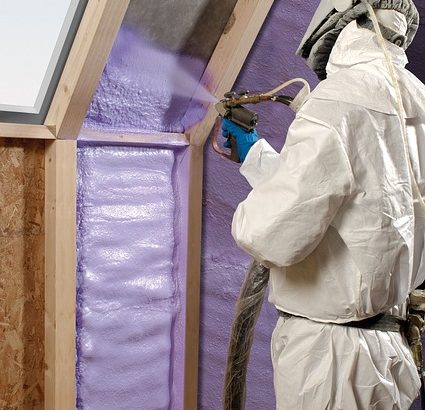Insulation Safety
Insulation is one of the most important phase in house constructions because it provides huge impact in the efficiency and costing of energy. Insulation is the first line of defense on winter where warm air naturally transfers from the inside to the outside leaving us cold and in summer where hot air moves from the outside to the inside leaving us uneasily hot. It serves as a barrier between the spaces inside the home and the atmosphere outside.
Although machines such as heating and air conditioning systems can alleviate these major issues, they use a lot of energy and gains recurrent expense. Proper insulation can help households in saving energy costs because it can resist heat flow by filling even the most minuscule gaps infiltrating the homes. Because there are many kinds of insulation in the market today, homeowners consider safety as the primary factor in choosing the right insulation for their homes.
Read Winter Fire Safety Checklist.
Fiberglass insulation is the most popular type of insulation in the market. It is reasonably cheap and easy to install. It works by trapping air between the fibers. It is a man-made mineral fiber created from materials such as ash, boron, recycled glass, sand and acrylic polymers. The most common physical risk of fiberglass insulation is the ability of the fibers to loosen during the installation process. It is best for installers to wear masks and cover their faces for protection. Fiberglass insulations can cause abrupt skin and eye irritation when in close contact.
Cellulose insulation provides a green, non-toxic, affordable and efficient thermal solution. It is considered safe because it is made from paper and has been chemically treated with permanent fire-resistance making it the type with the highest fire safety rating. However, during installation, fumes from the ink of the recycled papers and fibers of the cellulose can slacken off and irritate the breathing passages.
Spray foam insulation is made completely from chemical components like polyurethane, aerosol blowing agents and chemical binders. These substances can cause health hazards. Polyurethane, if inhaled, can cause exasperation to the lungs. It is not advisable to stay within or near the area where spray foam insulation is installed for a couple of days because of the hazardous effects of the chemical elements. However, after the installation, all is well with the insulation. Spray foam insulations are covered by a non-toxic ignition barrier that aids in reducing heat transfer and surface burning when there is fire. It is also covered by a thermal barrier that aids in delaying the rise in the temperature of the foam to prevent establishment of fire. Spray foam expands as it dries allowing it to create a more substantial seal that decreases the penetration of heat, air drafts and moisture.
Whatever type of insulation a homeowner chooses, it is a common knowledge that installation especially in the ceiling is a hazardous job. To make sure that accidents and letdowns in installing insulations can be prevented, take extra precautions, have the electrical wirings be inspected by licensed electricians and better yet, hire professionals to do the installation job.
If you want to do it yourself, make sure that the space is safe before entering into it. Do not go into hot roof spaces. Wait for it to cool and bring a bottle of water. Also, make sure to take regular breaks out of the roof spaces. Do not go into roof spaces that have safety and health hazards such as asbestos dust, sewerage contamination and poorly installed electrical wires. Get all of these issues sorted out first before attempting to run into it. Whenever you encounter any doubts of wire loose and electrocution, contact a qualified electrician immediately.
Ceiling fires are frequent mishaps. One cause is when old wiring overheats. Another is when down lights go through the ceiling. In order to prevent such event to happen, there should be minimum clearances around down lights, hot flues, and exhaust fans and transformers should not be placed underneath the insulation. Do not secure insulation materials with metal staples and keep away from those that contain reflective foil from electrical wirings and fittings to avoid electrocution. Make sure that polystyrene does not come in contact with wires because there will be a chemical reaction that will deteriorate wire insulations.
In addition, when installing insulations, ensure that water can easily escape in the event of a leak. Be extra cautious around plumbing because one small thump can cause big and long term damages to your home. When moving around the roof space, stand on the framing to avoid damaging the structure or falling through the ceiling. Make sure to have plenty of lighting so that you can see what you are doing. Headlights and other general lighting are very helpful. Wear protective clothing such as gloves, overalls, and footwear and face masks. Certain insulation materials can cause irritation to the eyes, skin and upper respiratory tract. Reflective insulation can also cause hazardous glare so make sure to wear eye protection. And if you can help it, do not work alone. Have someone to keep an eye on you and able to assist as you work through the installation process.
Installation of insulations can be done by homeowners themselves and this might mean a good means of savings on their part. However, to reduce the risk of safety and quality assurance, it is better to hire qualified professional insulation installer. They can guarantee a safe installation process that meets the regulation including safety rules and they can also buy insulation in bulk thus passing the savings to clients.
Call me on 0403 026 531 for a more effective insulation installation for your home.


Recent Comments